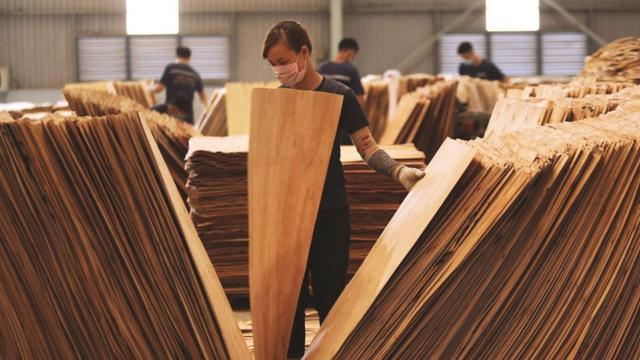[ad_1]
The Department of Trade Remedies announced that the US Department of Commerce (DOC) has just announced the sixth extension of the deadline for issuing final conclusions on investigations into anti-dumping and anti-dumping duty circumvention. Plywood subsidies with hardwood materials imported from Vietnam.
Accordingly, the final conclusion is expected to be released on May 2, 2023.
The Department of Industry and Trade said plywood made from hardwood materials is a product made from layers of peeled wood glued together with glue and then covered with one or two layers of hardwood panels on the surface.
According to the information summary of the Vietnam Timber and Forest Products Association, on June 17, 2020, based on the domestic industry’s allegations, the DOC launched an investigation to circumvent trade expedients with products that ensure Vietnam hardwood plywood effectiveness of trade expedients imposed on Chinese hardwood plywood can be used.
On July 25, 2022, DOC announced the preliminary closure of the investigation into circumventing trade defense measures against hardwood plywood imported from Vietnam.
The DOC’s preliminary conclusion is that if plywood from Vietnam has a core of peeled wood imported from China, it is subject to the anti-dumping and anti-subsidy tax levied on imported plywood from China.
Plywood from Vietnam, if it has a core made of peeled boards made in Vietnam or other countries, is not subject to anti-dumping and anti-subsidy tax.
The provisional tax rate can be up to 378.26% and applies to shipments entering the United States beginning June 17, 2020.
Based on this tentative conclusion, the DOC recommends that U.S. Customs and Border Protection continue to suspend liquidity and require importers to pay a deposit equal to the interim anti-evasion tax rate for shipments destined from Vietnam beginning June 17, 2020 imported into the United States (the date of notification of initiation of an investigation) for cases subject to the application of measures.
The DOC allows Vietnamese exporters to be excluded from circumvention, as well as US importers participating in the self-certification mechanism. This self-certification mechanism does not apply to companies that, in the opinion of the DOC, provide no or incomplete or inaccurate information during the investigation.
According to calculations, the number of companies participating in the self-certification accounted for about 80% of Vietnam’s export turnover during the investigation period.
Stakeholders have the right to submit written comments on the DOC’s preliminary findings, and a written request for a hearing on the comments must be submitted to the DOC within 30 days of notification.
The DOC also plans to conduct due diligence to verify the information before reaching a final conclusion.
It is estimated that Vietnam’s export turnover of timber and timber products to the US market will reach over US$7.8 billion by the end of 2022, up 3% from the same period in 2021.
According to statistics from the General Department of Customs, exports of timber and timber products to the US market fell by 47.2% in value in the first two months of 2023 compared to the same period last year.
The share of Vietnamese exports of timber and timber products to the United States fell the most, accounting for 46.7% of the total export value, down 13.6 percentage points from the same period in 2022.
The export value of timber and timber products reached USD 1.7 billion, down 31.8% from the same period in 2022. During this period, the export value of wood products reached US$1.05 billion, down 43.8% from the same period in 2022.
In 2022, about 90% of the value of Vietnam’s timber and timber products will come from export markets, 54% from the United States and followed by China with 13.4%.
The Import-Export Department (Department of Industry and Trade) believes that the US is a high demand market for pepper, so this is still a very potential market for the industry. However, the risk is also high due to defensive measures. Therefore, companies have to pay attention to the origin of goods and raw materials. At the same time, actively research, assess risks and monitor early warnings about the possibility of investigating trade preservatives with wood products.
[ad_2]
Source link

